This article was co-authored by Joshua Ellenhorn, MD. Joshua Ellenhorn, MD, is a board certified surgeon with advanced training in the fields of surgical oncology, minimally invasive surgery, and robotic surgery. He runs a private practice at Cedars-Sinai Medical Center in Los Angeles, California and is a nationally recognized leader in surgery, cancer research, and surgical education. Dr. Ellenhorn has trained more than 60 surgical oncologists and has spent over 18 years in practice at the City of Hope National Medical Center, where he was a professor and the chief of the Division of General and Oncologic Surgery. Dr. Ellenhorn performs the following surgical procedures: gallbladder surgery, hernia repair, colorectal cancer, skin cancer and melanoma, gastric cancer, and pancreatic cancer. He earned an MD from the Boston University School of Medicine, completed fellowships at the University of Chicago and Memorial Sloan-Kettering Cancer Center and finished his residency in surgery at the University of Cincinnati.
There are 14 references cited in this article, which can be found at the bottom of the page.
This article has been viewed 28,603 times.
One in eight women develop breast cancer at some point in their lives. It is the second most common cancer in women, with lung cancer being number one. Fortunately, many advances have been made in the medical community, both with early detection of breast cancers and suspicious breast lumps, as well as with treatment options that are available for breast cancer. If you have been diagnosed with breast cancer, and the stage is not too advanced, it may very well be able to be effectively treated and cured.[1]
Steps
Opting for Medical Treatment
-
1Determine the stage and severity of your breast cancer.[2] Before being able to realistically discuss treatment options with your doctor, you will need to know the details of your breast cancer. Things to be aware of include whether it is present in one or both breasts, the size of the tumor, whether there is one lump or multiple lumps, and whether or not it has spread to the lymph nodes in your armpit and/or to other areas of your body (called metastasis). All of this information will help your doctor to determine the stage of your cancer, which will in turn dictate your treatment options. The stages of breast cancer are:[3]
- Stage I — The tumor is localized to the breast and is less than 2 cm in diameter.
- Stage II — The tumor is present in the breast and axillary (armpit) lymph nodes. It may be up to 5 cm in diameter.
- Stage III — The tumor is greater than 5 cm in diameter, and has spread to local areas surrounding the breast.
- Stage IV — The cancer has spread (metastasized) all throughout the body. This stage is unfortunately not curable.
-
2Opt for surgery. If breast cancer is detected, the most common first line of treatment is surgery. You can either receive what is called a "lumpectomy," in which only the worrisome lump is removed and not your entire breast, or a "mastectomy," in which your whole breast is removed.[4] Some women even receive what is called a "double mastectomy," in which both breasts are removed, even if the cancer is only present in one breast. This is often to diminish their risk of developing breast cancer in the other breast down the road (as sometimes having it in one breast can predispose you to developing it in the other breast down the road).[5]
- At the time of surgery, you can opt for breast reconstruction if you wish. This can be done at the same time as your breast is removed, or it can be done at a later date.
- Many health care plans cover breast reconstruction surgery for women who have breast cancer. On the other hand, it is generally not covered when received for cosmetic reasons such as a breast augmentation.
- If your cancer is of an early enough stage, surgery alone may be enough.
- Radiation may or may not be done in addition to surgery depending upon the extent of your cancer. Your doctor will advise you.[6]
- It is often recommended to proceed with chemotherapy (at least hormone-based therapy) following surgery to be certain that you give yourself the absolute best chance to be cure.
Advertisement -
3Consider chemotherapy. One of the areas of greatest growth in the treatment of (and cure for) breast cancer is in the development of a variety of different chemotherapy options.[7] There are three classes that you can consider:
- Hormonal or endocrine therapy — When you are diagnosed with breast cancer, your doctor will test for the presence of estrogen and/or progesterone (hormone) receptors on the cancer cells. If your cancer tests positive for either estrogen and/or progesterone, your doctor will suggest that you take a hormonally-based treatment such as Tamoxifen. This will inhibit any further growth of your cancer and help to give you the best chance of cure.[8]
- Regular chemotherapy — If your cancer is at risk of having spread to other areas of your body, your doctor will likely recommend a standard chemotherapy regimen that travels throughout your body to hopefully eliminate any breast cancer cells that have spread beyond the breast itself.
- Molecularly targeted therapy — Your doctor will also test your breast cancer for a protein called HER2.[9] If it is positive for this protein, your doctor can offer you molecularly targeted therapy to help fight the breast cancer and to optimize your chances of cure. These agents include trastuzumab and lapatinib, which both treat HER2-positive breast cancers.
-
4Have your axillary (armpit) lymph nodes examined.[10] Since surgery is almost always the first-line approach to the treatment (and cure) of breast cancer, at the same time as the surgery is being performed the surgeon can also take a first-hand look at the lymph nodes surrounding your breast and in your armpit. Visualizing these lymph nodes is key, as the presence of cancer cells in the lymph nodes will alter your doctor's approach to treatment.
- Your doctor may also do a sentinel node biopsy, in which the lymph node most likely to be infected with cancer is removed and tested. This lymph node is identified when the surgeon injects a dye or radioactive substance near the tumor, then looks for which lymph nodes are dyed or radioactive. The node is then removed and tested for cancer cells.[11]
- If the cancer has not spread to your lymph nodes, usually a combination of surgery followed by hormone therapy (such as tamoxifen) is sufficient to cure your cancer.
- On the other hand, if it has spread to your lymph nodes, your doctor will advise surgically removing the affected lymph nodes as well as the affected breast, and also offering you a generalized chemotherapy regimen in addition to hormone therapy.
- Note that, if your cancer has spread beyond your lymph nodes into distant areas of your body, a complete "cure" of your cancer will not be possible. The cancer can only be completely cured if it is isolated to the breast itself, or if your doctor is able to remove the lymph nodes prior to any further spread beyond them.
-
5Follow-up with regular screening after treatment.[12] Even after you have been cured of cancer (or after your breast cancer is in "remission," meaning that it can no longer be picked up on medical tests), you will need to continue with regular screening to detect any possible recurrences. Follow-up screening recommendations generally consist of:
- Regular physical exams with your doctor every three to six months for the first three years following treatment, where your doctor examines your breasts for any abnormalities. This can be reduced to every six to 12 months for the next two years, and annually thereafter.[13]
- Continued mammograms and a chest radiograph annually following treatment.
- There may be additional screening protocols in place for people with more severe cancer, or for those with a genetic syndrome who are predisposed to cancer recurrences or to cancer developing in other areas of the body.
Catching Breast Cancer Early
-
1Note that the effectiveness of treating (and curing) breast cancer depends on how early it is detected.[14] In some ways, the best form of "treatment" is prevention. This is why a huge effort has been made in the medical community to educate people about the importance of regular screenings for breast cancer, so that if any suspicious lumps are detected, their likelihood of being cured is as high as possible.
-
2Follow through with all screening tests.[15] Women are advised to receive a mammogram every two years from the age of 50 onwards.[16] This is a specialized form of x-ray that can detect abnormalities in the breast. If an abnormality is detected, further testing (such as an ultrasound, a biopsy of the abnormality, or possibly an MRI) will be performed to confirm whether or not it is breast cancer that needs to be treated.[17]
-
3Receive genetic testing if you have a family history of breast cancer. If you have a family history of breast cancer, and the affected family member tests positive for the BRCA gene, you are also advised to be tested for the presence of this gene.[18] If you have it, it increases your chances of both breast cancer and ovarian cancer. The good news, however, is that if you test positive, you are aware of your heightened risk, and your doctor will offer you more screening tests than the average woman to optimize your chances of early detection and cure.[19]
- Women who are at high risk for getting breast cancer, like those with BRCA gene, will start getting mammograms earlier.
- Some people who test positive for the gene also receive what is called a "prophylactic double mastectomy," meaning that they have their breasts removed before any cancer develops as a means of preventing it from occurring in the first place.
- This is a matter of personal preference, as it does have a significant cosmetic impact.
Expert Q&A
-
QuestionI am a 9 year old girl. I went to a swimming pool last month. When I got out my breasts were itchy and have spots on them. Is this breast cancer?
 Carrie Noriega, MDDr. Noriega is a Board Certified Obstetrician & Gynecologist and medical writer in Colorado. She specializes in women’s health, rheumatology, pulmonology, infectious disease, and gastroenterology. She received her MD from the Creighton School of Medicine in Omaha, Nebraska and completed her residency at the University of Missouri - Kansas City in 2005.
Carrie Noriega, MDDr. Noriega is a Board Certified Obstetrician & Gynecologist and medical writer in Colorado. She specializes in women’s health, rheumatology, pulmonology, infectious disease, and gastroenterology. She received her MD from the Creighton School of Medicine in Omaha, Nebraska and completed her residency at the University of Missouri - Kansas City in 2005.
Board Certified Obstetrician & Gynecologist No, this is not breast cancer. It is hard to say exactly what it is without being able to see the spots but this sounds more like a rash that started as a reaction to something. If it doesn't go away on its own in a day or two you should see your doctor so that they can help figure out what it is and help it go away.
No, this is not breast cancer. It is hard to say exactly what it is without being able to see the spots but this sounds more like a rash that started as a reaction to something. If it doesn't go away on its own in a day or two you should see your doctor so that they can help figure out what it is and help it go away.
References
- ↑ https://www.cancer.org/cancer/breast-cancer/treatment/treatment-of-breast-cancer-by-stage.html
- ↑ http://www.uptodate.com/contents/breast-cancer-guide-to-diagnosis-and-treatment-beyond-the-basics
- ↑ https://www.cancer.org/cancer/breast-cancer/understanding-a-breast-cancer-diagnosis/stages-of-breast-cancer.html
- ↑ Joshua Ellenhorn, MD. Board Certified General Surgeon & Surgical Oncologist. Expert Interview. 28 April 2020.
- ↑ https://www.cancer.org/cancer/breast-cancer/treatment/surgery-for-breast-cancer.html
- ↑ https://www.cancer.org/cancer/breast-cancer/treatment/surgery-for-breast-cancer.html
- ↑ https://www.cancer.org/cancer/breast-cancer/treatment/chemotherapy-for-breast-cancer.html
- ↑ https://www.cancer.org/cancer/breast-cancer/treatment/hormone-therapy-for-breast-cancer.html
- ↑ https://www.cancer.gov/about-cancer/treatment/types/targeted-therapies
- ↑ http://emedicine.medscape.com/article/1947145-treatment
- ↑ https://www.cancer.gov/about-cancer/diagnosis-staging/staging/sentinel-node-biopsy-fact-sheet#q3
- ↑ http://www.cancer.net/research-and-advocacy/asco-care-and-treatment-recommendations-patients/follow-care-breast-cancer
- ↑ Joshua Ellenhorn, MD. Board Certified General Surgeon & Surgical Oncologist. Expert Interview. 28 April 2020.
- ↑ http://www.uptodate.com/contents/breast-cancer-guide-to-diagnosis-and-treatment-beyond-the-basics
- ↑ http://www.uptodate.com/contents/breast-cancer-guide-to-diagnosis-and-treatment-beyond-the-basics
- ↑ Joshua Ellenhorn, MD. Board Certified General Surgeon & Surgical Oncologist. Expert Interview. 28 April 2020.
- ↑ https://www.cdc.gov/cancer/breast/basic_info/screening.htm
- ↑ https://www.cancer.org/cancer/breast-cancer/risk-and-prevention/breast-cancer-risk-factors-you-cannot-change.html
- ↑ https://www.cdc.gov/genomics/disease/breast_ovarian_cancer/testing.htm
- ↑ https://www.cdc.gov/cancer/breast/basic_info/screening.htm



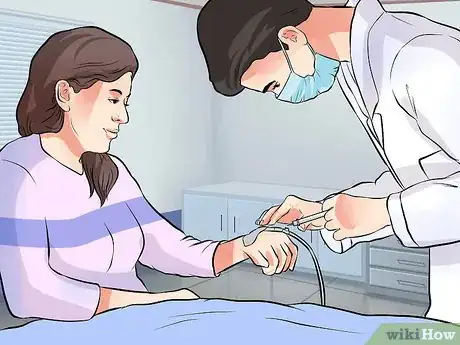
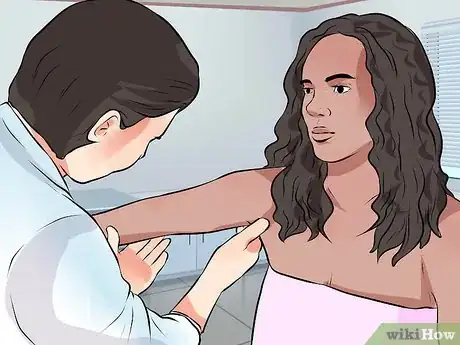
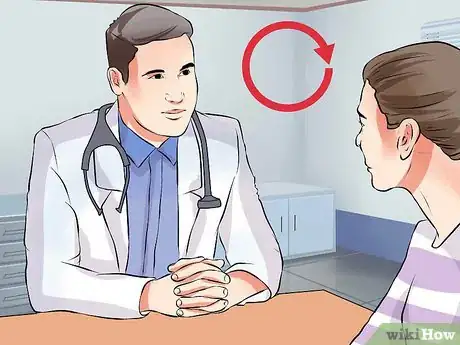
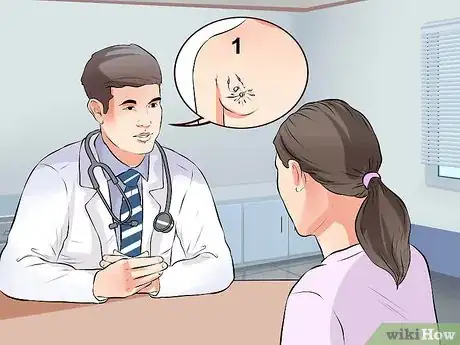
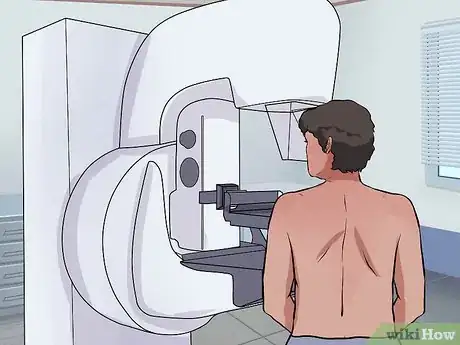










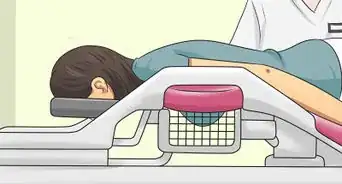









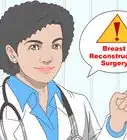




































Medical Disclaimer
The content of this article is not intended to be a substitute for professional medical advice, examination, diagnosis, or treatment. You should always contact your doctor or other qualified healthcare professional before starting, changing, or stopping any kind of health treatment.
Read More...